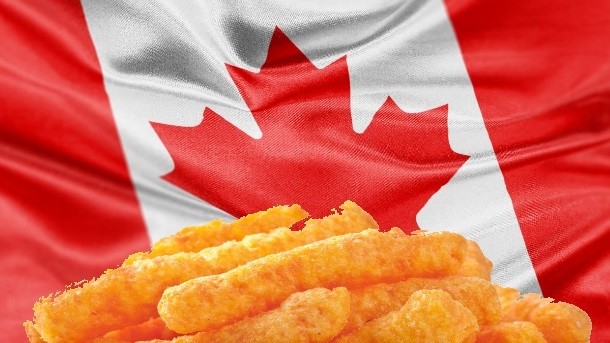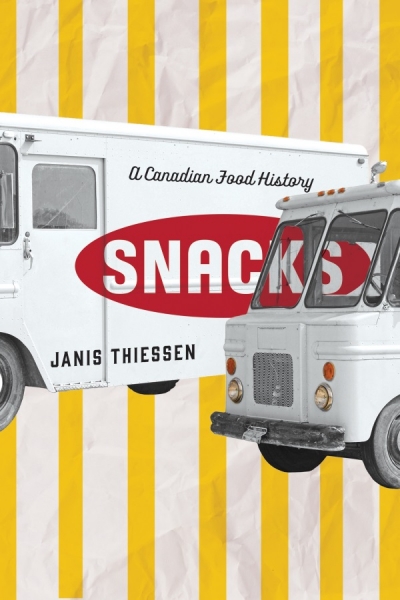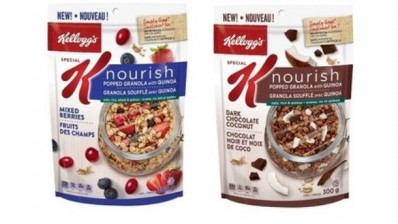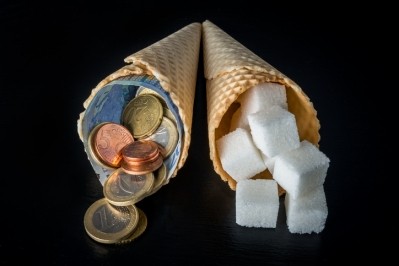Snacks: A Canadian Food History

“Snack foods are simultaneously loved and reviled. Many of us eat them - and in great quantity. But we are told they are not healthy, either physically or morally.
“Snacks are filled with sugar or fat or salt, each of which—rightly or wrongly—has been linked in popular discourse with a host of diseases: hypertension, diabetes, bad cholesterol, and (the most recent, and seemingly most pressing, concern) obesity.”
Snack food or junk food?
However, according to Thiessen, potato chips, for example, are made primarily of potatoes so she doesn't define them as “junk” and she was brought up in a home where snacks were always available.
“I think it’s also only fair that before we pass judgement on the folks who have this as their entertainment that we first get to know the folks who make them, and have a little perspective about where snacks fit in with all the other things we consume that also are not particularly healthy,” she says.
Thiessen is an associate professor of History and the associate director of the Oral History Centre at the University of Winnipeg.
The socioeconomic role of snacks
As the author of two previous books, Not Talking Union: An Oral History of North American Mennonites and Labour and Manufacturing Mennonites: Work and Religion in Post-War Manitoba, she obviously looks at the influence that snacks played on the socioeconomic history of Canada.
“Take the story of Old Dutch Foods (potato chips) in Manitoba, for example. Agriculture was transformed in this province with the collapse of the sugar beet industry and many farmers switched to potato production for Old Dutch,” says Thiessen.
“Potatoes, along with the oil produced from the canola harvested by other prairie farmers, are the main ingredients of this snack. Old Dutch sponsored local sporting events (for both children and adults) for decades in Winnipeg. And across the prairies and northern Ontario, the company sponsored a children’s auction show on local television stations that inadvertently encouraged environmentalism and neighbourhood cooperation.
“So, the influence of snacks on Canada’s socioeconomic history is larger and broader than many might expect.”
Q&A
BAS: Your book examines the history of snacks in Canada. Do you feel it could also reflect the history of snacks globally?
Yes. The discussions in the book regarding processed food, obesity, addiction, home cooking, food security, moral judgment, industry consolidation, and advertising to children, among other topics.
BAS: Who do you really admire in the book?
As a company, I admire Hawkins Cheezies for their rejection of capitalist imperatives like growth and expansion. As an individual, I admire Covered Bridge fryer operator Thomas Broad, who has overcome personal adversity and has pride and autonomy in his work.
BAS: Where do you see the snack industry heading today?
As an historian, my focus is on the past, rather than the future. But recent trends discussed in the book include the promotion of factories as tourist destinations, and using stories (such as family heritage or a farm-to-fork ethos) in marketing.
Hawkins Cheezies concentrate exclusively on Cheezies, a brand of cheese curl snack made and sold in Canada by WT Hawkins, invented after World War II by James Marker.
Thomas Broad is trained as a train engineer but due to unforsee circumstances had to accept work as a fryer operator at Covered Bridge.
BAS: What advice would you give an aspiring start-up in the snack industry?
I think all business people benefit from knowing history, including the histories of their own industry. I hope that the history of companies like Hawkins Cheezies would inspire entrepreneurs to challenge some of the traditional assumptions about how to succeed in business.
In fact, Cheezie inventor Jim Marker himself has summed it up perfectly:
“If you’re doing something well, you should continue to do it. Cheezies has been our forte and Cheezies will remain our forte.”
Then this section of the book says it all:
Even the distinctive variety of shapes of Cheezies is explained not as a consequence of the manufacturing process but as a deliberate marketing decision. Willard Hawkins explained to salesmen in 1955 that Cheezies are “made in odd sized pieces, some larger than others, because we found that the public preferred it that way. Some folks like the smaller pieces and others prefer the larger ones. Plus, this, it has a homemade appearance. In other words, it doesn’t look like a molded manufactured piece where every piece is exactly the same form and size.”
Manufacturing only Cheezies, and manufacturing them in non-uniform shapes, are here presented as logical choices as much as they are the result of circumstances. The company, however, did experiment with different flavours of Cheezies, though these were never marketed.
White cheese, peanut butter, pizza, and chicken were tested locally. Nacho-flavoured Cheezies were well received, but it was decided that there was not a large enough market for the product. Instead, the decision was made to market Cheezies in only one flavor but in several sizes of packaging.
Shipping manager Richard Bly explained: “They still manufacture the Cheezies the same way. Nothing’s different. Everything’s exactly the same… Nothing’s changed. And that’s good… Give the people what they want… We are probably – and this is only my assumption – we are probably one of the only companies I know in the world – and I mean the world – who sell the same product in over ten different sizes of bag… You give the public what they want… That’s what they want. So we do it.”
BAS: How do you feel about marketing snacks to children today?
This is a complicated issue, of course. But the history of Old Dutch Kids Bids (in the book’s final chapter) reveals that marketing to children can have some unintended and even positive consequences.
BAS: Are you planning another book?
My next major project is to produce a comprehensive history of food in my home province, Manitoba, including production, retail, and consumption. My colleagues (Kimberley Moore, Kent Davies, and Sarah Story) and I will produce an interactive website, a traveling digital exhibit, podcasts, a collection of oral history interviews, and a cookbook.
Book details:
Snacks: A Canadian Food History
Janis Thiessen (Author)
Paperback, ISBN: 978-0-88755-799-6, $27.95
Published by University of Manitoba Press
Set to be released in early September with a launch to follow in October
Available through Chapters, Amazon and online.












